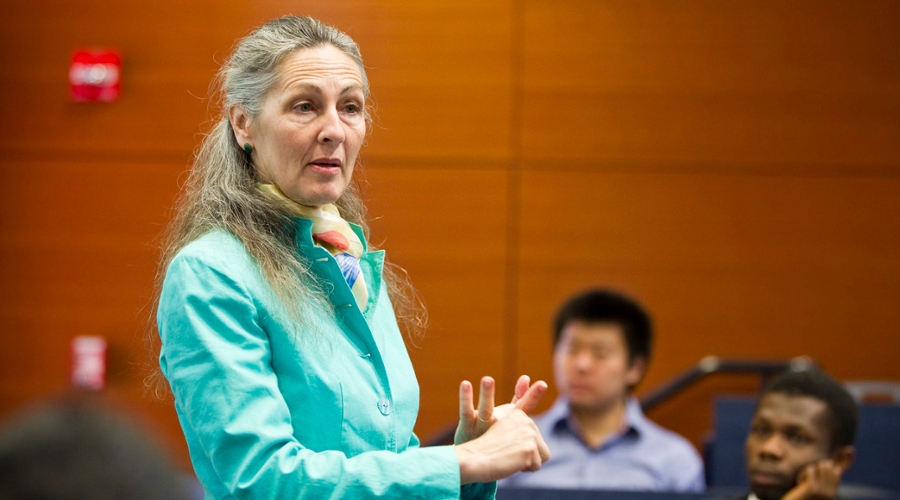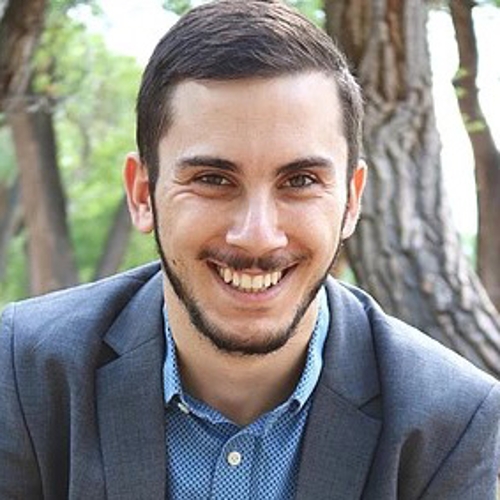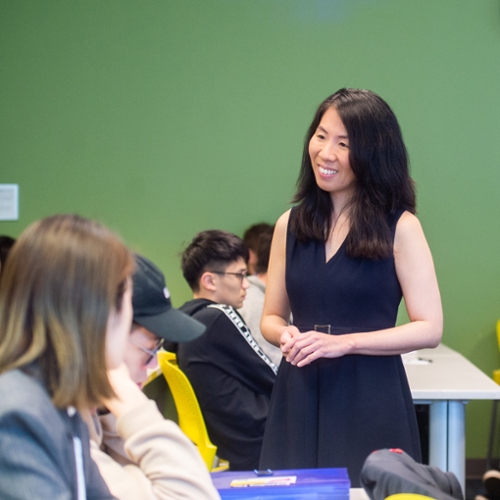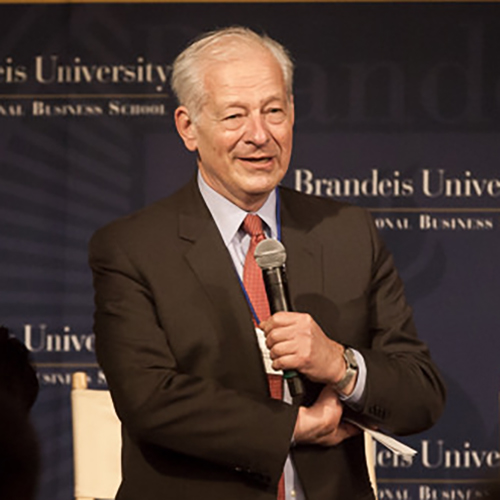It didn’t take long for Robert de Sousa, MA’14, to realize he had an edge over the other interns at JPMorgan.
“I was basically working as an associate,” he recalled. “I knew how to do the analysis and how to communicate about it. I was giving presentations to my boss’s boss.”
De Sousa honed his ability to apply macroeconomics lessons to the real world in
Prof. Carol Osler’s class at Brandeis International Business School. He made the most of it, converting his internship into a full-time job at JPMorgan right after graduation.
For Osler, the Martin and Ahuva Gross Professor of Financial Markets and Institutions and a former economist at the Federal Reserve Bank of New York, there’s simply no other way to approach the subject.
“I think of macroeconomics as a verb — it’s something you do,” said Osler. “Our students go out into the world to do practical stuff. And that’s what I teach them.”
In the classroom, Osler’s guiding principle is to prove why economics matters. That’s why she kicks off her ECON 202a Applied International Macroeconomics course with a gut-punch, showing real pictures of people whose lives have been upended by runaway inflation. Some are waiting in line for food, while others are sick but unable to see a doctor. It’s an emotional appeal, but one Osler uses to make an important point.
“This class is not just sitting around talking about theory,” she said. “I want the students to understand the human impact.”
The course is a product of years of experimentation. Osler built it organically based on her own professional experiences. She doesn’t use a textbook because none fit how she teaches the class. And she’s a firm believer that most students learn more by doing.
Osler still introduces all the abstract concepts and theories you’d expect in a macroeconomics course, but only in service of explaining the big central ideas — inflation, business cycles, financial crises — that her class is built around. After all, it’s those big ideas that have the biggest impact on the real world.
“It’s all about people’s experiences,” said Osler. “If you can attach emotional resonance to what you’re teaching, your students are going to remember it.”
Osler spent a decade at the Federal Reserve Bank of New York analyzing current events.
“I’ve had the experience to identify exactly what an economist does and what skills an economist needs to be successful,” she said. “Our students have to be able to think about the actual forces that move business and finance.”
De Sousa still appreciates the skills he gained from the class, as do his bosses at JPMorgan.
“Prof. Osler’s class felt like dead-on training for these types of roles,” said de Sousa. “You can’t ask for anything more.”




